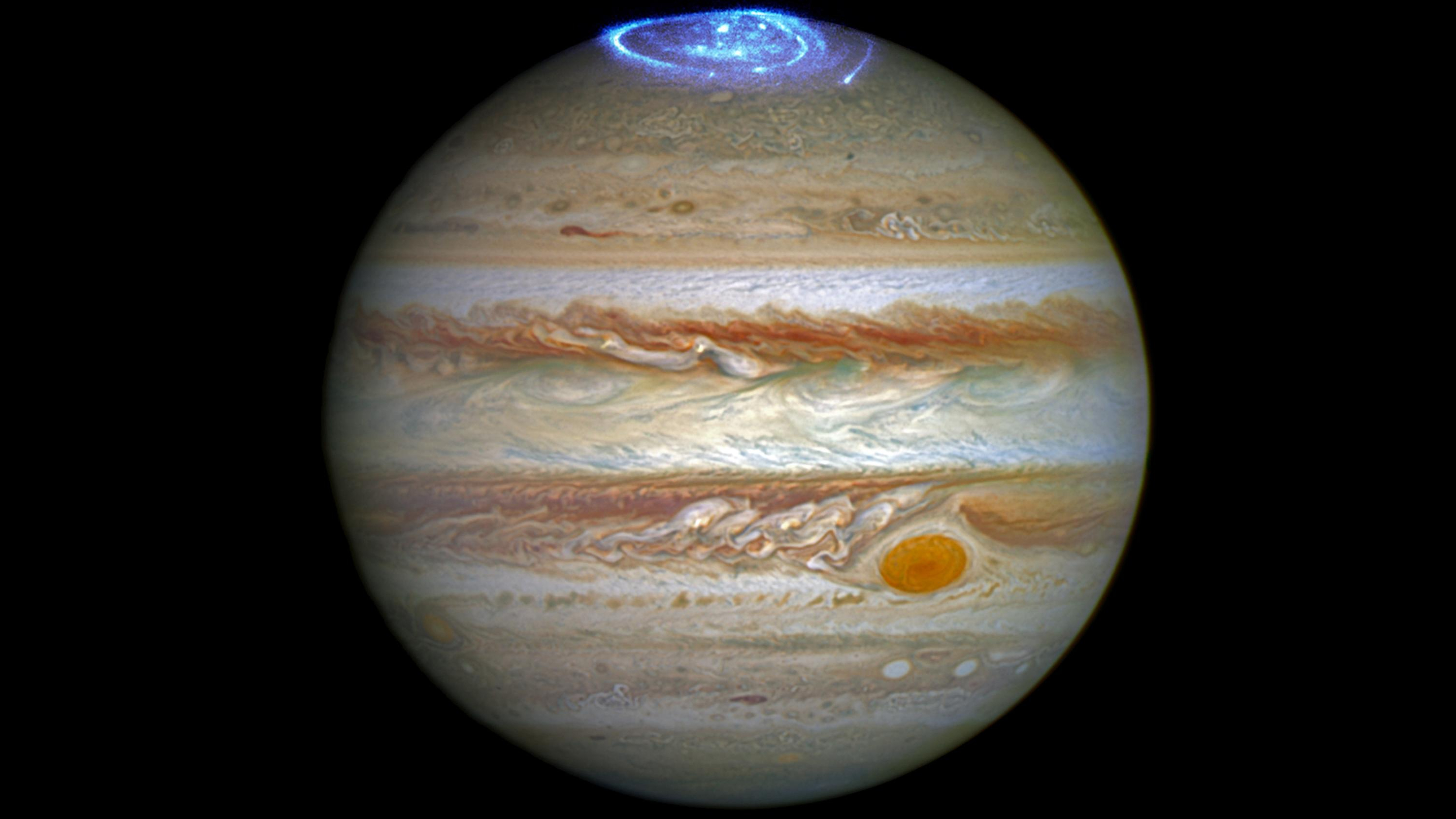
New research suggests that understanding factors common to celestial light shows over Earth, Saturn and Jupiter can help predict risky space weather.
The stunning Northern Lights and Southern Lights are examples of auroras over Earth that are very familiar to skywatchers. Earlier in May, Earth experienced the most powerful aurora event in 21 years, reminding us of the stunning beauty of these phenomena.
Auroras are generated over the poles of our planet when charged particles that make up the sun's solar wind strike Earth's protective magnetic field known as the magnetosphere. These particles travel down magnetic field lines, interacting with atoms in our atmosphere and causing them to emit light. The bombardment of charged particles from the sun doesn't just generate beautiful light shows over Earth, though. It can also result in "space weather," like geomagnetic storms that sometimes threaten satellites, communications systems and even power infrastructure on Earth.
Our planet is not the only solar system world that experiences auroras at its poles. These incredible light shows also occur over gas giants Jupiter and Saturn, as well as frigid ice giant Uranus. In fact, auroras should be possible around any planet with an atmosphere and magnetic field — and, as astronomers discovered in 2018, auroras can also be seen over extra-solar planets, or "exoplanets."
Related: Colossal X-class solar flare suggests return of sunspot group that fueled May's epic auroras (video)
The magnetic fields of Earth, Saturn and Jupiter are similar in that they all have a funnel-shaped geometry. This causes energetic particles like electrons in the solar wind to precipitate into polar regions, localizing all but the strongest aurorae to the poles of these planets.
There are many ways that auroras are generated over each of these planets, however, making them unique to one another. Differences in the strength of magnetic fields, the speed at which these planets rotate, the conditions of solar winds when they strike the planets, and even the activity of moons around these worlds can all result in different auroral structures.
Yet, despite these differences, a team of scientists from the Department of Earth Sciences at The University of Hong Kong (HKU) thinks a unified understanding of how the solar wind drives auroral displays over various planets could lead to important practical applications. This unity can help us monitor, predict and explore the magnetic environments of our solar system, including around Earth.
"Our study has revealed the complex interplay between solar wind and planetary rotation, providing a deeper understanding of auroras across different planets," Binzheng Zhang, team leader and an HKU scientist, said in a statement. "These findings will not only enhance our knowledge of the aurorae in our solar system but also potentially extend to the study of auroras in exoplanetary systems."

To study planetary magnetic field dynamics, the team looked at the way electromagnetic fields like those of Earth's magnetosphere interact with electrically conducting fluids that take the role of charged particles in solar winds. Modeling this in three dimensions helped them to better understand how auroras over different planets take on different shapes or "morphologies." This can then be used to understand how these different aurora morphologies impact various planetary conditions.
As it turns out, combining solar wind conditions and planetary rotation leads to a new parameter that controls the main structure of auroras. This can explain exactly why different auroral structures are observed on Earth, Saturn and Jupiter. The fact that the different auroras of Earth and Jupiter can be explained using a unified framework came as a big surprise, the team said.
The interaction of stellar winds with planetary magnetic fields is a fundamental process in the cosmos.
Thus, not only could these findings help us better understand the magnetic environment of Earth and the wider solar system, but they could also help us better understand the conditions of distant planetary systems.
The team's research was published in the journal Nature Astronomy.







